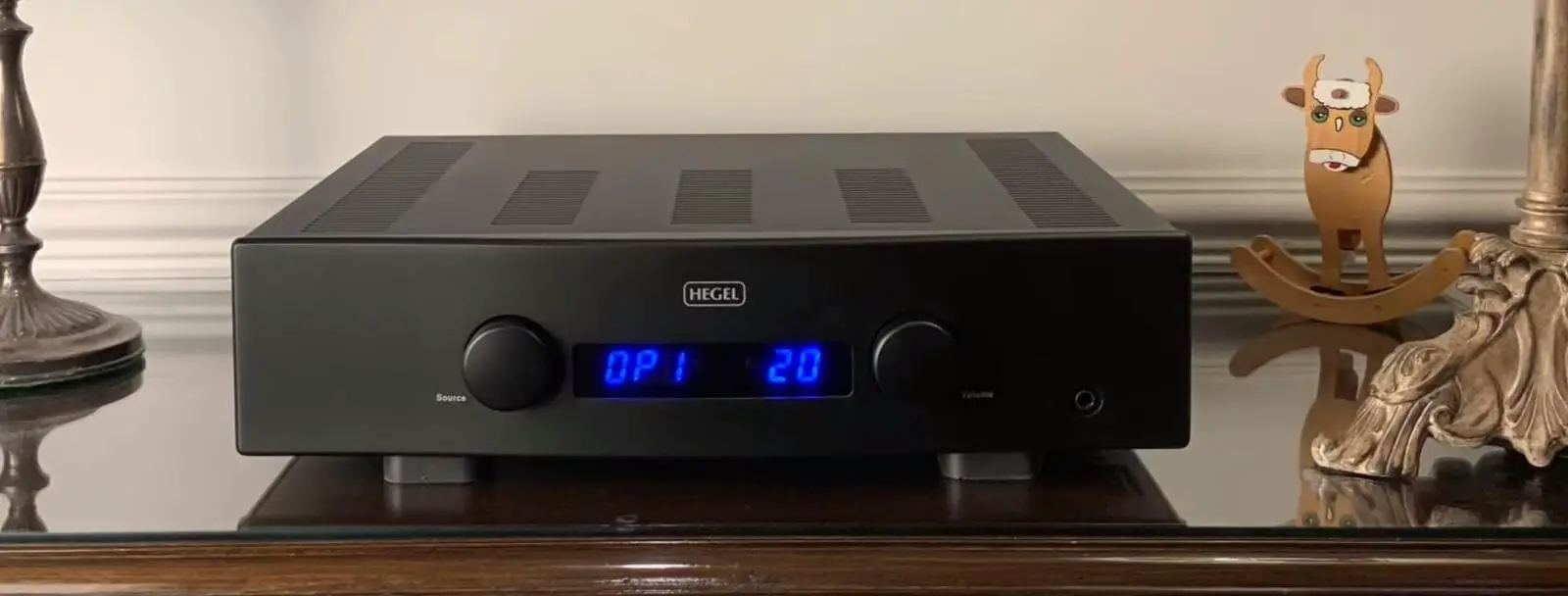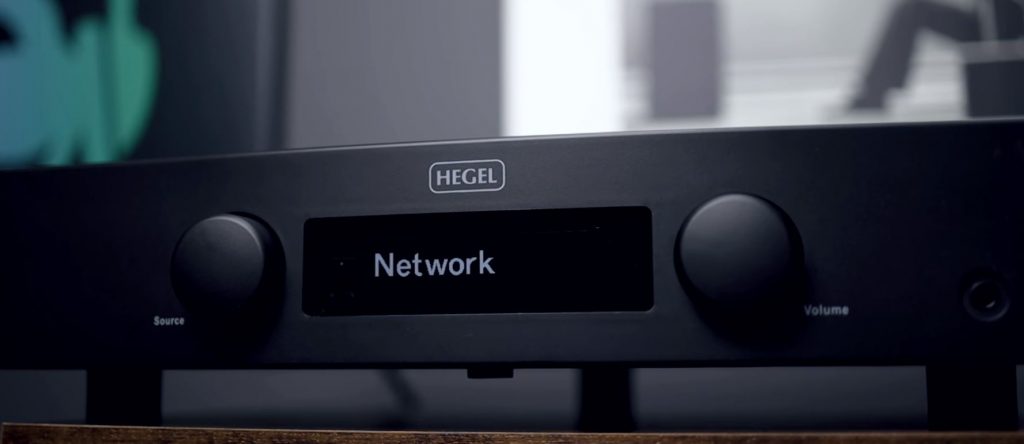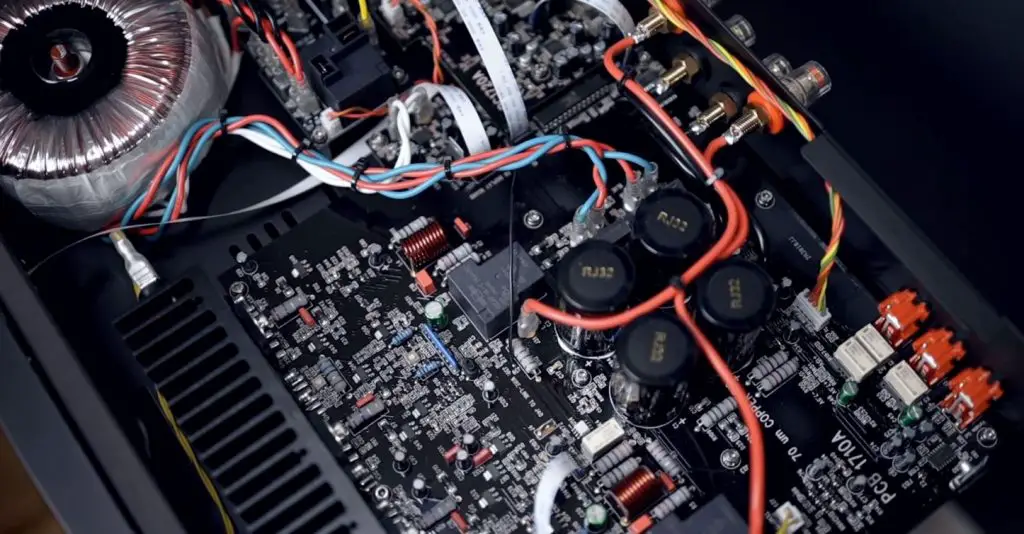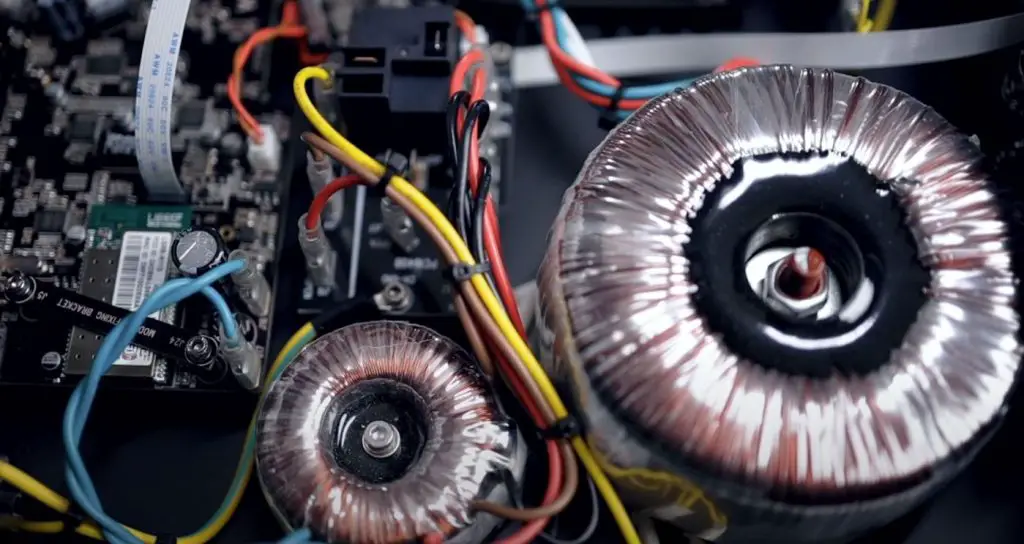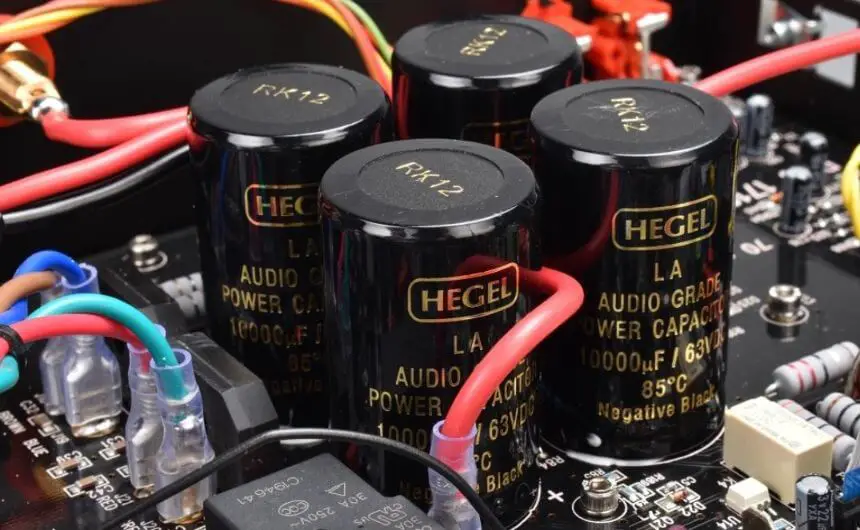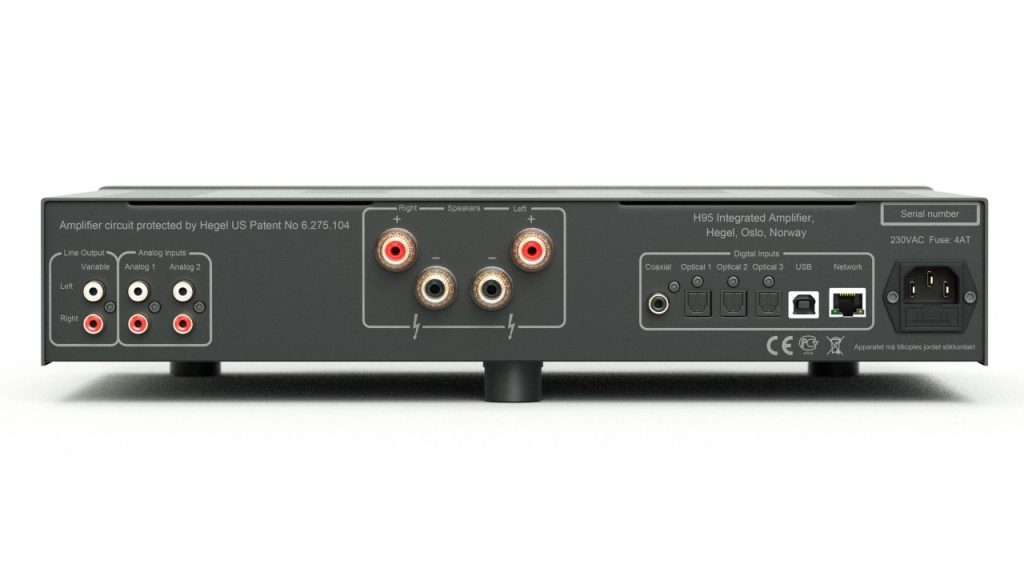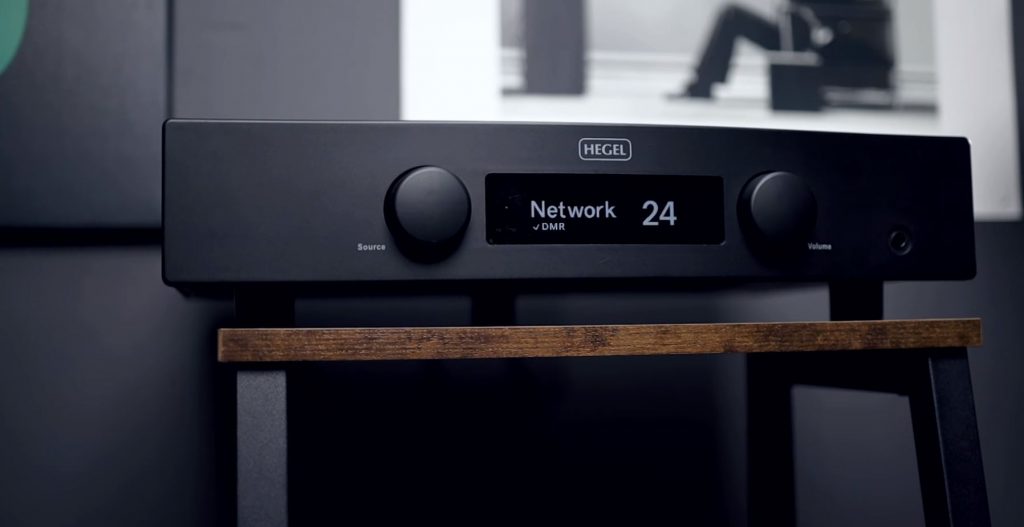Hegel H95 Review
In the past ten years, Hegel is one of the audio companies that has rapidly emerged and is highly valued by many audiophiles. Hegel’s comprehensive streaming amplifier has won the European EISA awards many times. Here is the Hegel H95 integrated amplifier review.
To qualify as an entry-level high-end amplifier, I think there are three conditions. The first is the price, which is significantly cheaper than other high-end amplifiers. The second is manufacturing technology, which must have the level of high-priced amplifiers. The third condition is subjective, whether its sound performance makes people feel as if they are listening to a high-priced model. With the above three premises, it is not so easy to become an entry-level high-end amplifier.
Hegel H95 music system has network streaming and USB DAC function. It is compatible with AirPlay and Spotify and supports formats including WAV, FLAC, ALAC, Ogg, and MP3. The USB port on the back of the machine can be connected to a computer. The highest format corresponding to optical and digital coaxial input is 192kHz/24bit.
Design
Hegel SoundEngine Technology
The key technology and design concept of Hegel, from flagship to entry-level, are precisely the same. Hegel founder Bent Holter’s patented technology, Multistage amplifier with local error correction, is the most representative technology.
The technology Hegel calls “SoundEngine” compares the difference between the output and input signal waveforms of each amplifier stage through a dedicated processor and then cancels the distortion signal to achieve the purpose of eliminating distortion.
The goal of SoundEngine to eliminate distortion includes harmonic distortion and noise and the crossover distortion of the final power push-pull output stage, which can make the linear characteristics of the low-level output of the class AB amplifier be like the class A.
In recent years, SoundEngine has evolved into SoundEngine 2. The main evolution lies in the speed of the signal processor and the faster compensation of distortion. Besides, it is absolutely rare that the damping factor of an amplifier with a rated output power of fewer than 100 watts, such as the H95, can exceed 2000, which means that it has a highly outstanding ability to control the speaker.
Hegel H95 Digital Signal Processing Module
So far, I have seen three versions of the digital circuit board of the Hegel integrated amplifier. No matter which version, the digital conversion circuit includes digital reception, upsampling processing, DAC, and audio output.
The digital circuit board of the previous H95 is the same as the earlier H160. The most relevant part of the sound performance:
- Upsampling processing module uses AKM AK4127VF 192kHz/24bit SRC chip.
- The digital conversion module uses AKM AK4396 192kHz/24bit DAC chip.
- LPF is composed of TI N5532 low noise dual OPA chip with passive components.
The H95 digital circuit board is the same model as the H190.
The Hegel H95 streaming music system’s upsampling processing still uses AKM AK4127VF 192kHz/24bit SRC chip. It converts 44.1kHz, 88.2kHz sampling rate audio up to 176.4kHz, and 48kHz and 96kHz sampled audio up to 192kHz. And it can convert 16 and 20 bits to 24 bits to expand the dynamic range. Hegel insists on adopting upsampling with a high-precision oscillator to reduce the time base error. That is their SynchroDAC technology.
I would also like to make a special note here: the real purpose of upsampling is not to expand the bandwidth but to make the digital noise farther away from the audio range and make the background quieter.
One of the significant changes of the Hegel H95 amplifier compared to H90 is the DAC, which is upgraded from the previous AKM AK4396 24bit DAC to the high-end 32bit DAC chip AK4490. Although both have the same high dynamic range, the signal-to-noise ratio is 120 dB. However, the latter’s total harmonic distortion is as much as 12 dB lower than the former.
The LPF after the DAC is still a combination of TI N5532 and passive components. The voice of this OPA chip is a relatively familiar character. From the digital circuit board’s perspective (including the digital conversion circuit), this machine is precisely the same as the current higher-level models H120 and H190.
Hegel H95 Power Module
H95 adopts dual transformers for power supply. The small transformer is dedicated to supplying power to the digital circuit board. The large toroidal transformer has three sets of secondary loops, two of which are used for the amplifying circuit (used primarily for audio circuits).
The other secondary loops are used as the power supply for the panel monochrome OLED text display’s related circuits. In the past, Hegel’s entry-level models have never used digital and analog discrete dual transformers for power supply, including the H95 and the higher-level Röst. That is more conducive to reducing noise.
As mentioned earlier, the Hegel integrated amplifier series all use SoundEngine, DualAmp, and DualPower technologies. It is not just the same technology. Even the circuit materials are very similar. The material difference between high-priced, medium-priced, and entry-level models is almost only in quantity (such as power crystals and filter capacitors) and size (supply voltage and current). The components are the same.
Hegel installed the power circuit of the H95 power amplifier circuit on the main circuit board. There are two bridge rectifiers, and four Hegel special customized 10,000μF/63V audio filter capacitors are installed near the power amplifier circuit.
The Hegel amplifier circuit board’s thickness is 70μm, which is about twice that of a general printed circuit board. In this way, the transmission impedance of the same connection length between the circuits is halved, and the signal loss can be reduced.
Hegel H95 Amplifier Module
The power amplifier module of the H95 music system uses a pair of Toshiba 2SA2121 / 2SC5949 push-pull outputs for each channel. As for the mid-range H190 and the flagship H590, the same power module is used.
Sound Performance
I use Hegel H95 with Pioneer S-1EX floor-standing speakers to play music files through streaming media. The Hegel amplifier’s sound has always been highly recognizable, and I can feel the Hegel integrated amplifier’s consistent characteristics when listening to the H95.
The first is power. The power of Hegel H95 per channel is 60 watts (8 ohms). If you have never tried Hegel integrated amplifier, you will surely be quite surprised by the power of H95. How can there be such a powerful 60-watt integrated amplifier?
In fact, the low-frequency thickness it presents is no less than that of most amplifiers with more than 100 watts. You can also try to drive the bookshelf speaker, it will feel as if the bookshelf speaker’s size suddenly becomes larger, and the strength and weight of the low frequency sounds like a medium-sized floor speaker.
The second feature is the texture and tone of the sound. I initially thought that the style of a Hegel amplifier was like a vacuum tube amplifier. Hegel called the sound quality that his amplifier wants to express as Organic Sound. In my opinion, it is very human, very warm, with fine texture, warm, rich, and high-density intermediate frequency as the base, which is very similar to a tube amplifier.
Hegel H95 still retains the above characteristics. However, compared with the tube amp, its intermediate frequency is more straightforward and loud. The vocals and cello have clear texture, delicate texture, and solidity. The treble has a thickness and is not harsh, but it is not as convergent as a general vacuum tube amp.
I think H95 may be due to the DAC upgrade. The treble has become more transparent and shiny. The overall tone and texture of the H95 are pretty similar to that of the H190. Although not as vigorous and authoritative as the H190, it is still quite sensual. It feels younger and lively than the H190, and the sound is still sweet and charming. There is also quite good fluency and speed.
The third quality is extremely quiet. When I listen to lively music such as rock and hip-hop, H95 always tempts me to turn the volume up so that my body feels more substantial energy. The three-band can still maintain excellent performance when it is turned on loudly.
On the contrary, when I want to listen to classical music at a normal volume, the tranquil background of the H95 can give the sound field a high degree of perspective, allowing me to hear the instrument’s beautiful sound more completely is quite beautiful and realistic.
Conclusion
Hegel H95 integrated amplifier maintains HEGEL’s consistently simple and low-key black appearance. H95 has a network streaming function (supports UPnP, AirPlay, built-in Spotify Connect) and a complete digital converter function (with USB, coaxial, and optical digital audio input). A HEGEL H95 is equivalent to the combination of “digital source + amplifier,” plus a pair of speakers can form a digital stream audio system.
H95 is equipped with a high-quality digital conversion circuit, applying HEGEL patented technology “SoundEngine2”, which can instantly correct the distortion of each amplifier stage of the power amplifier circuit. H95 continues the fine tradition of HEGEL amplifiers adopting high current design.
You must not underestimate the H95 output power per channel is only 60 watts, not just enough to cope with 4-ohm speakers, it can even drive 2-ohm speakers. The damping factor is as high as 2000, which is about 20 times the average damping factor of commercially available amplifiers! From these performances, it can be seen that the H95 drive and control capabilities are outstanding. It is an amplifier that allows people to enjoy popular and classical music fully.
Hegel H95 Specs
- Power output: 2 x 60 W into 8 Ω
- Minimum load: 2 Ω
- Analog Inputs: 2 x unbalanced (RCA)
- Digital Inputs: 1 x coaxial (RCA), 3 x optical, 1 x USB, 1 x Network
- Line level Output: 1 x unbalanced variable (RCA)
- Headphone Output: 6.3 mm Jack (front)
- Frequency response: 5 Hz – 100 kHz
- Signal-to-noise ratio: More than 100 dB
- Crosstalk: Less than -100 dB
- Distortion: Less than 0.01% @ 25 W/8 Ω/1 kHz
- Intermodulation: Less than 0.01% (19 kHz + 20 kHz)
- Damping factor: More than 2000 (main power output stage)
- Dimensions incl feet: 10 cm x 43 cm x 31 cm (HxWxD), 10,6 kg shipping weight
- Dimensions (US): 3.93″ x 16.93″ x 12.20″ (HxWxD), 23.37 lbs shipping weight
- Finish: Black
